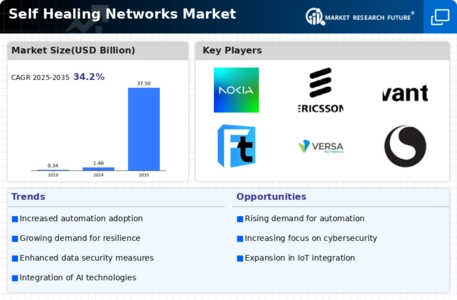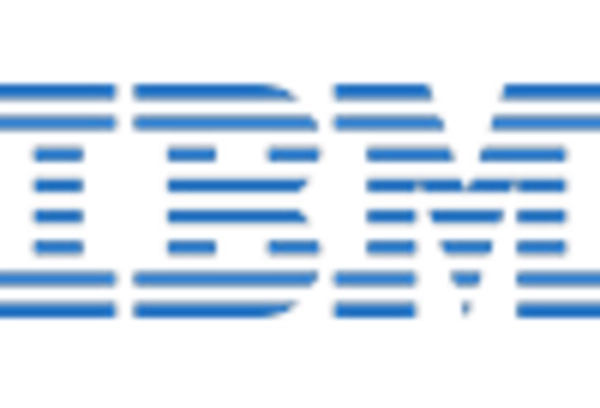Market Analysis
Self Healing Networks (Global, 2025)
Introduction
The self-healing networks market will revolutionize the way companies manage and maintain their network infrastructures, deploying advanced technologies to increase resilience and operational efficiency. The increasing reliance of digitally transformed businesses on complex network systems has driven the demand for self-healing capabilities, driven by the need for continuity of service and reduced downtime. Artificial intelligence, machine learning and automation will be used to diagnose and resolve issues automatically, reducing the need for human intervention and therefore operational costs. Also, the growing emphasis on security and the proliferation of IoT devices have increased the need for self-healing networks that can adapt to dynamic environments and respond to threats. Self-healing networks will play a critical role in the future of network management strategies.
PESTLE Analysis
- Political
- In 2025, the political background to self-healing networks is dominated by government initiatives to increase the security of digital infrastructure. For example, the US government allocates $ 1.1 billion to develop self-healing technology as part of its national cyber security strategy. In addition, the European Union imposes a self-healing network on all member states by 2025, which affects the telecommunications sector of more than 27 countries.
- Economic
- The economic environment of self-healing networks in 2025 is characterized by an increase in the investment in digital transformation. The companies are expected to spend around $ 500 million on self-healing solutions, driven by the need to reduce operational costs and improve the availability of services. In addition, the global IT services market will employ more than four million people in the field of network management and cybersecurity, which will create a high demand for qualified personnel in this area.
- Social
- Social acceptance of self-healing networks is growing, especially amongst technically sophisticated consumers and companies who put a premium on data security. Surveys show that 78% of companies believe that self-healing networks enhance customer satisfaction, as they reduce downtime and improve availability. In addition, educational initiatives are underway, with more than 200 universities worldwide offering specialised courses in network automation and self-healing technology. This reflects a growing societal readiness to embrace advanced network solutions.
- Technological
- In the year 2025, the market for self-healing networks will be dominated by technological innovations. Artificial intelligence and machine learning are expected to enhance the self-healing capabilities of networks. It is expected that approximately 60% of new network solutions will be based on these technologies. 5G networks are also expected to speed up and improve the self-healing processes. By the end of 2025, an estimated 1.5 billion 5G connections will be connected to the network, which will have a significant impact on network resilience and performance.
- Legal
- Legal frameworks are evolving to accommodate the complexity of self-healing networks. By 2025, more than 15 countries will have enacted laws that regulate the use of automation in the management of their networks, with a focus on data privacy and security compliance. The European Union’s General Data Protection Regulation (GDPR), for example, continues to influence the way self-healing networks handle personal data. With fines of up to €20 million for noncompliance, it is shaping the operating environment for network operators.
- Environmental
- In 2025 the importance of self-healing networks will be increasingly brought to the fore as companies try to reduce their carbon footprint. It is estimated that the implementation of self-healing technology can lead to a reduction of up to 30 per cent in the energy consumption of network operations. In addition, the push for sustainable solutions has resulted in the development of greener network equipment. Almost 40 per cent of all new network devices are now designed with energy efficiency in mind, and this trend is expected to continue.
Porter's Five Forces
- Threat of New Entrants
- “The self-healing networks market is expected to experience a moderate level of competition due to the advanced level of technology and expertise required to implement the systems. But as the market grows, there will be new entrants. Nevertheless, established companies with considerable resources and patents will continue to present a challenge to newcomers. Moreover, the large amount of capital required for research and development will deter some new entrants.
- Bargaining Power of Suppliers
- The bargaining power of suppliers on the market for self-healing is relatively low. This is primarily due to the large number of suppliers for the necessary components and techniques. In the future, competition in the market may increase, which could reduce suppliers’ power even further. Moreover, the fact that switching suppliers often does not involve major costs gives companies additional bargaining power.
- Bargaining Power of Buyers
- In the market for self-healing networks, the buyer’s power is considerable, because they are becoming increasingly aware of their options and the advantages of self-healing technology. With several vendors offering similar solutions, they can demand better terms and conditions and more features. Customized solutions are gaining ground and further increase the buyer’s power.
- Threat of Substitutes
- The threat of substitutes in the self-medication market is moderate. The traditional network management solution is a substitute for self-medication. However, with the increasing complexity of networks and the need for automation, self-medication is more desirable. The introduction of new competing products may become a threat if they offer the same benefits at a lower cost or with greater ease of use.
- Competitive Rivalry
- Competition in the self-healing network market is expected to be high. Several players will compete for the market. Moreover, the increasing importance of network reliability will encourage companies to continue to develop their products. Competition will result in price wars and greater marketing efforts, which will increase the rivalry between the companies.
SWOT Analysis
Strengths
- Enhanced network reliability and uptime through automated self-repair capabilities.
- Reduction in operational costs due to decreased need for manual intervention.
- Improved user experience with minimal service disruptions.
- Ability to quickly adapt to changing network conditions and threats.
Weaknesses
- High initial investment costs for implementation and technology integration.
- Complexity in managing and maintaining self-healing systems.
- Potential over-reliance on automated systems, leading to skill degradation in human operators.
- Limited understanding and acceptance among traditional network management teams.
Opportunities
- Growing demand for resilient networks in critical sectors such as healthcare and finance.
- Advancements in AI and machine learning can enhance self-healing capabilities.
- Expansion into emerging markets with increasing digital infrastructure needs.
- Partnerships with cybersecurity firms to bolster network security features.
Threats
- Rapid technological changes may outpace current self-healing solutions.
- Increased competition from traditional network management solutions adapting to self-healing features.
- Potential cybersecurity threats targeting automated systems.
- Regulatory challenges and compliance issues in different regions.
Summary
Self-healing networks have a number of strengths, such as improved reliability and cost reduction, but also a number of weaknesses, such as high initial costs and complexity. Opportunities are largely based on the need for reliable networks and the development of artificial intelligence. The threats are largely from the rapid development of technology and the risk of cyberattacks. Strategic emphasis on partnership and market education is important to make the most of strengths and opportunities and to counteract weaknesses and threats.









Leave a Comment